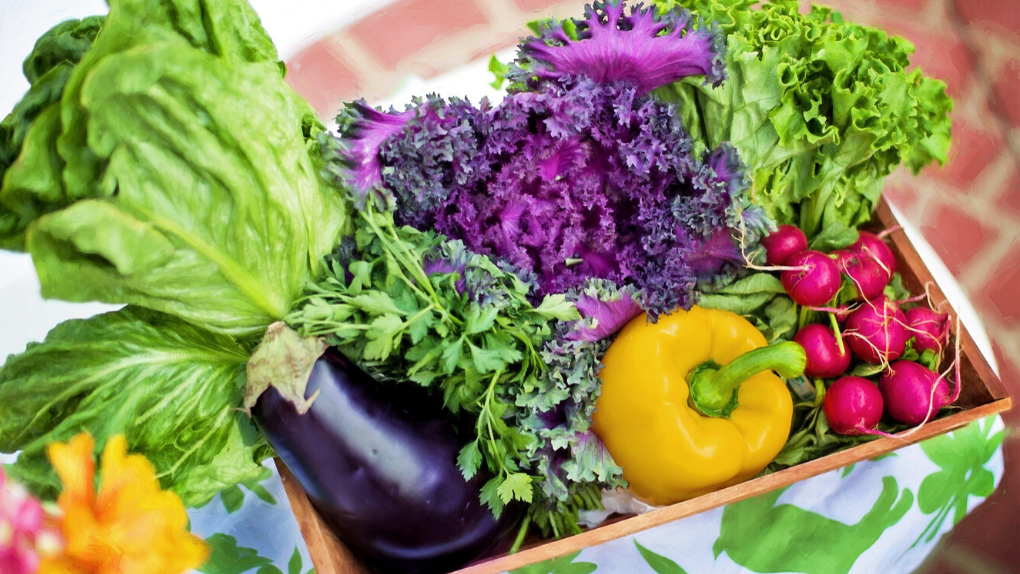Hey there British gardeners!
Are you searching for ideas on what to grow in your gardens in 2020? Maybe you want to grow more fruits and veggies that will help improve your and your loved ones health?
If the answer is “yes”, then keep on reading. We have compiled a list of 15+ fantastic fruits and veggies along with tips and considerations on how to grow them yourself.
- Blueberries
- Broccoli
- Carrots
- Elderberry
- Flax
- Garlic
- Ginger
- Kale
- Kiwi
- Lemons
- Mushrooms
- Red bell peppers
- Spinach
- Strawberries
- Sunflower
- Sweet Potato
- Watermelon
The Truth About Immune Boosting Fruits And Veggies
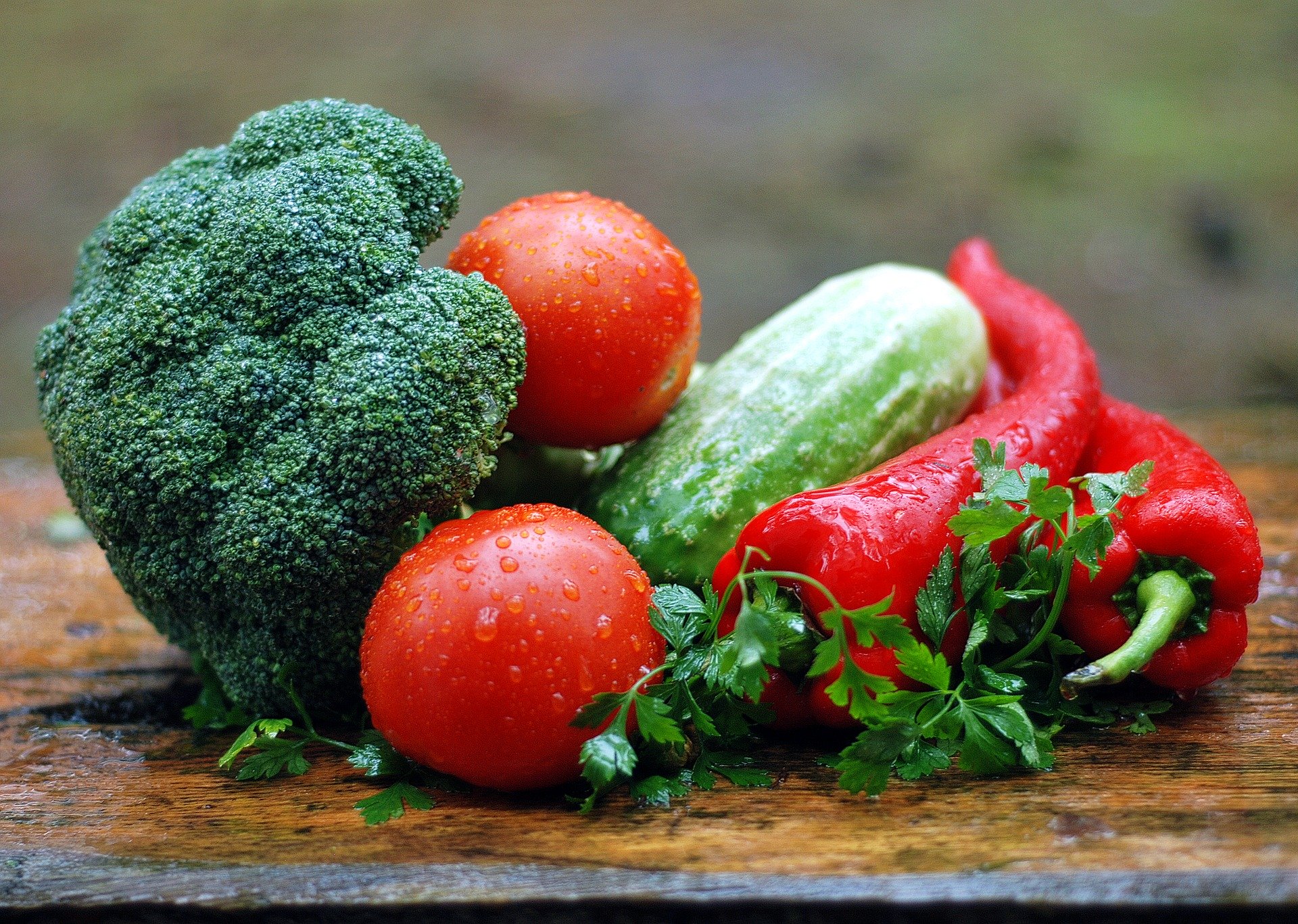
Let’s start with saying that the terms “immune boosting fruits and veggies” and “immune boosting foods” are often misused.
As this Harvard Health article says “There are still relatively few studies of the effects of nutrition on the immune system of humans, and even fewer studies that tie the effects of nutrition directly to the development (versus the treatment) of diseases.”
Our immune system remains something of a mystery to scientists. Nevertheless, most health professionals around the world agree that one of the ways to improve your immunity to viruses, colds and other health issues is by having a healthy diet, which includes a good variety of fruits and veggies.
In the “Vitamin and mineral requirements in human nutrition“ publication, the World Health Organization (WHO) lists vitamin A, vitamin D, vitamin B6, beta-carotene, Zinc and Iron, as some of the most important micronutrients for improved immunity. The WHO advises to eat а variety of vegetables and fruits, preferably raw or not overcooked, to maintain good health.
The UK’s national Eatwell food guide recommends over a third of our diet to come from fruit and vegetables and to eat at least 5 portions of a variety of fruit and vegetables every day.

Interesting fact: According to the 2018 Global Nutrition Report, only 31% of packaged food products in the UK have a Health Star Rating of 3.5 or more. Which means that 69% of packaged products in Britain do not meet the healthy threshold and are thus of relatively low nutritional quality.
If you want to have a source of fresh, clean, homegrown fruits and veggies and you have a backyard, greenhouse or some free space in your balcony, 2020 is a good year to try and grow them yourself. We promise, it is not that hard!
This article is not medical advice. What we want is to share with you ideas of fruits and veggies rich in important vitamins, nutrients and minerals that will enrich and improve your diet. We have also included tips on how to grow them yourself in the UK. If you have any specific health concerns, please consult with a health professional.
Now that we got that out of the way, here is our list with awesome fruits and veggies you can grow this year to help you get your daily dose of recommended nutrients and vitamins for better health and immunity. We have also included some basic growing tips and considerations.
Blueberries

Blueberries are rich in antioxidant and anti-inflammatory phytochemicals, Vitamin C and Manganese.
Although they are not common garden fruits for Brits, these delicious berries are quite easy to grow even in the UK.
- Blueberries can be planted any time throughout the year, as long as the soil is not frozen.
- They tolerate light shade, but planting them in a sunny spot will produce more abundant crops.
- For bigger harvests, plant at least two blueberry plants to allow them to cross-pollinate.
- They like acid soil, so you might consider planting them in pots where you can regulate the soils’ acidity. Ensure the soil stays at a pH of 5.5 or lower, to avoid problems. Fabric pots are a great idea as they provide adequate drainage and aeration.
- Add mulch in the spring to help maintain moisture and acidity.
- Water regularly throughout the summer, don’t allow the soil to dry between waterings.
- After the first two years, prune your plants lightly only in winter when the blueberry bushes are dormant.
- In colder months, protect your plants from the frost by covering them or moving them in a shed or a garage.
- Be mindful of birds. Cover the plants with netting if you notice birds start stealing your blueberries.
Broccoli

Did you know that in 2017 Broccoli was named Britain’s favourite vegetable? And what’s not to love about it! It is a great source of calcium, antioxidants, vitamin C, beta-carotene, fiber and more essential vitamins and minerals.
Broccoli sowed in late winter as a Calabrese strain can be harvested in late autumn. The Sprouting Broccoli (purple) sown in spring you can harvest in late winter next year. Sow and harvest days are strain-specific, so make sure to check the label of your seeds package.
- Seedlings are vulnerable to Cabbage root fly so consider protecting them with insect-proof mesh or horticultural fleece.
- Keep in mind that broccoli likes well-drained, moisture-retentive, fertile soil.
- Protect the broccoli plants from birds (especially pigeons) by covering them with netting or fleece.
Carrots

When you were a young kid, did your parents tell you eating carrots will give you night vision? Well, you probably already figured out the lie ?. But carrots are an amazing source of Vitamin C, Vitamin A, beta-carotene, and molybdenum.
Have you ever grown your own carrots? Well, let us tell you – carrots taste the best when freshly picked from the garden.
- Carrots require lots of sun and fertile well-drained soil. You can plant them directly in the ground or for short-rooted types in containers like fabric bags.
- Sow them from April to early July, unless they are early cultivars which can be sown earlier under cloches (it should be written on the seed package).
- Thin carrots as they appear. The final distance between each carrot should be 5cm (2 inches) for earlies and 7cm (3 inches) for the larger maincrop carrots.
- They are drought resistant but will benefit some watering during dry spells.
- To protect them from carrot fly cover with fleece tunnels or erect barriers made of clear polythene.
Elderberry
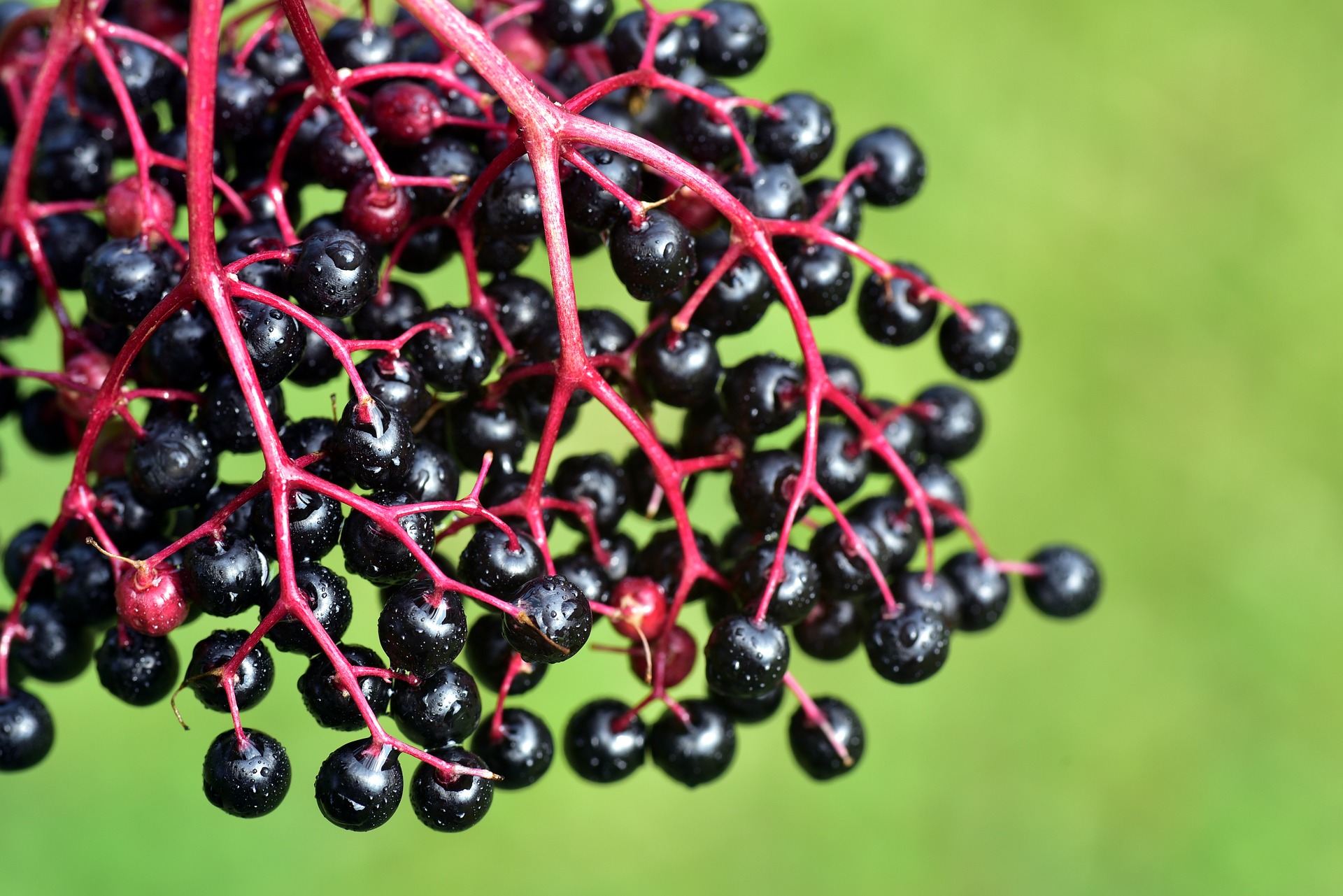
In the 17th century, John Evelyn, a British researcher, declared, “If the medicinal properties of its leaves, bark, and berries were fully known, I cannot tell what our countryman could ail for which he might not fetch a remedy [from the elderberry], either for sickness or wounds.”. This research from 2011 concludes that Rubini elderberry liquid extract is active against human pathogenic bacteria as well as influenza viruses.
Elderberry can be grown as a shrub or a small tree, reaching up to 6 feet in height depending on the variety.
- Elders are not very picky. They can grow in full sun or partial to full shade. They also tolerate different soil conditions but prefer moderately fertile, humus-rich, moist but well-drained soils. One thing your elderberries will not tolerate is drought.
- Plant bare-root plants from November until March. Container-grown ones are preferably planted in autumn or spring.
- Once established, elderberries may need watering during prolonged dry spells. If you grow them in containers, water regularly spring and summer to prevent the compost drying out.
- In winter or early spring, you can prune dead, damaged stems, or stems growing in unwanted directions.
Important: Do not consume your elderberries raw, as they are known to be poisonous and cause stomach problems. Consume them only dried or cooked.
Flax
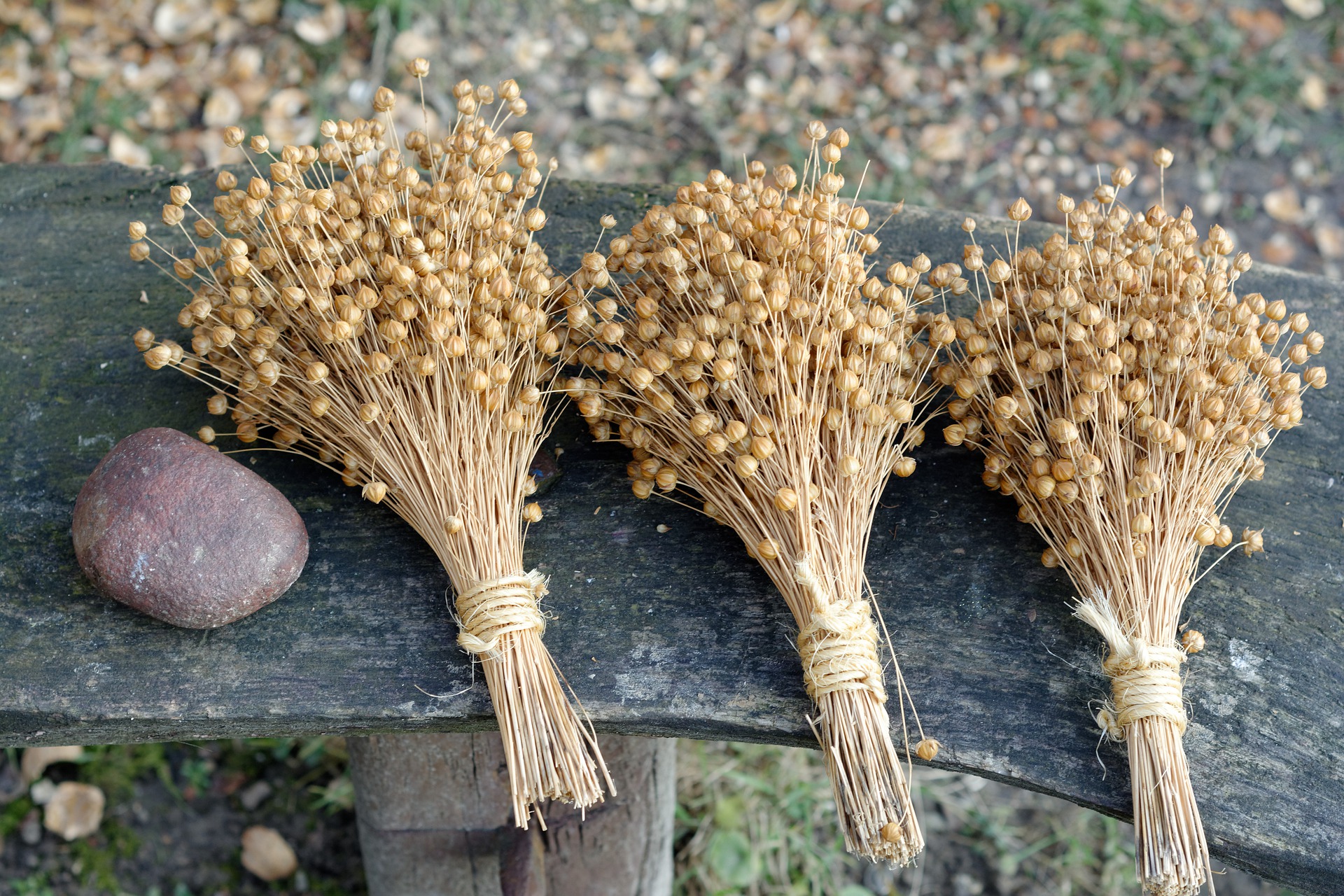
Flaxseed (or linseed) is known for being a good source of omega-3 fatty acids and polyunsaturated fatty acids.
In the UK, flax is mostly grown commercially, but planting it from seed in your own garden is not as hard as you might think.
- You can plant your spring flax seed in March and April, once the soil temperature is 7°C. Like most small-seeded crops, linseed will require a firm fine seedbed.
- Flax will grow in all parts of the UK and on most soil types, but it is preferred to sow your seeds in a sunny, sheltered place with fertile soil.
- Sow into moisture at a depth of 2-3cm and water them regularly to keep the soil moist.
- A thin layer of mulch will help moderate soil moisture and temperature.
- Once the seeds appear, withhold watering so the seeds heads ripen and become golden yellow.
- Spring linseed should be ready for harvest from mid-August to mid-September.
- To harvest your flax seeds, pull the entire plants by their roots and hang them in a dry place for 3-5 weeks.
Garlic
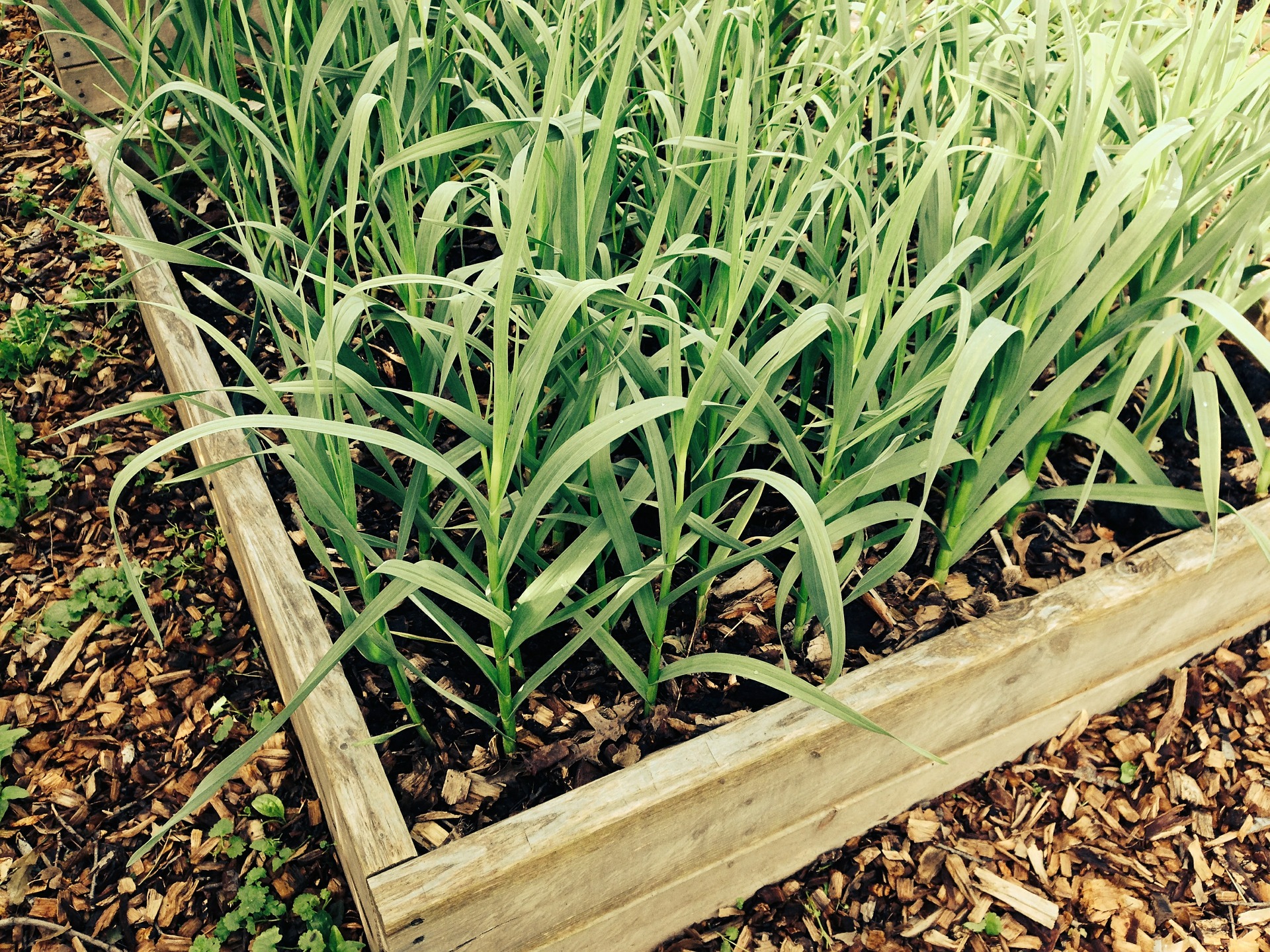
Garlic has long been a common seasoning worldwide and is known as a source of vitamin C, Vitamin B-6, manganese and various special sulphur acidic compounds. A study from 2001, in which 146 people were given either garlic supplements or a placebo, concluded that the group which consumed a garlic supplement was less likely to get a cold and recovered faster if infected.
The good news is that any amateur gardener can grow good garlic.
- Plant your garlic in Spring, from January until March, in a sunny spot with a free draining soil that is not too acid. Garlic can also successfully be grown in pots.
- The cloves need to be about 15cm (6 inches) apart and 3-4cm (1-2 inches) below the surfaces with the roots facing down.
- Keep it well watered and weed-free.
- Stop watering in the last few weeks when the bulbs are large and well-formed to avoid rotting.
- Harvest once the leaves have turned yellow.
Ginger

Ginger is rich in Potassium, Magnesium, Phosphorous, Calcium and Vitamin C and is known for relieving pain, nausea, sore throat and other inflammatory illnesses.
The ginger plant is native to tropical climates but you can grow it successfully even in the UK.
- It is best to plant ginger at the end of winter or beginning of spring.
- You need a piece of fresh root ginger with well-developed “growth buds” (small yellow tips). Soak it overnight and afterwards break the root into pieces with each piece having one growth bud.
- Plant the pieces indoors in pots with moist potting compost with good drainage. The growth buds should level with the soil.
- Keep your pots in a sunny, warm spot indoors. Keep in mind that your ginger may grow up to 1 meter in height.
- Your ginger plant will be fully grown in about 6-10 months.
Kale
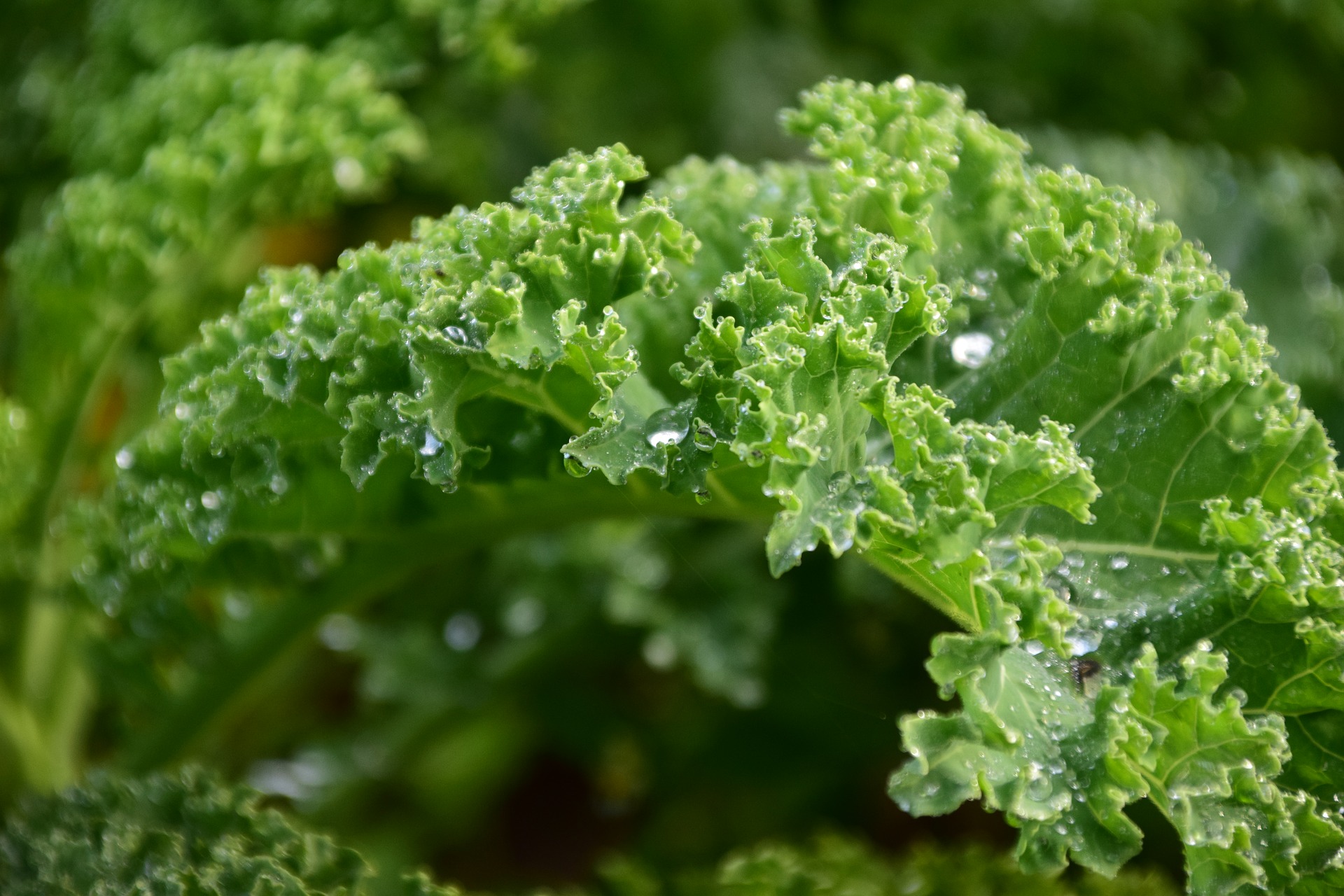
Although Kale was named Britain’s least favourite vegetable, it is an awesome source of Vitamin C, Vitamin A, Vitamin B-6, Calcium, Magnesium and Iron.
Kale is very resistant to diseases and very hardy. It can survive temperatures as low as -15°C.
- Sow your kale seeds in April and early May in outdoor seedbeds. To aid germination, cover the seedbed and keep it moist.
- When your seedlings reach about 15cm and have 4-6 leaves, they are ready to be transplanted.
- Pick a sunny or lightly shaded spot for your kale crop and keep about 45cm spacing in between plants.
- Keep the soil moist and weed-free.
- Don’t let your crop overgrow, as kale tastes best when it is young and tender. Usually, late October until early December is the ideal harvest time.
Kiwi
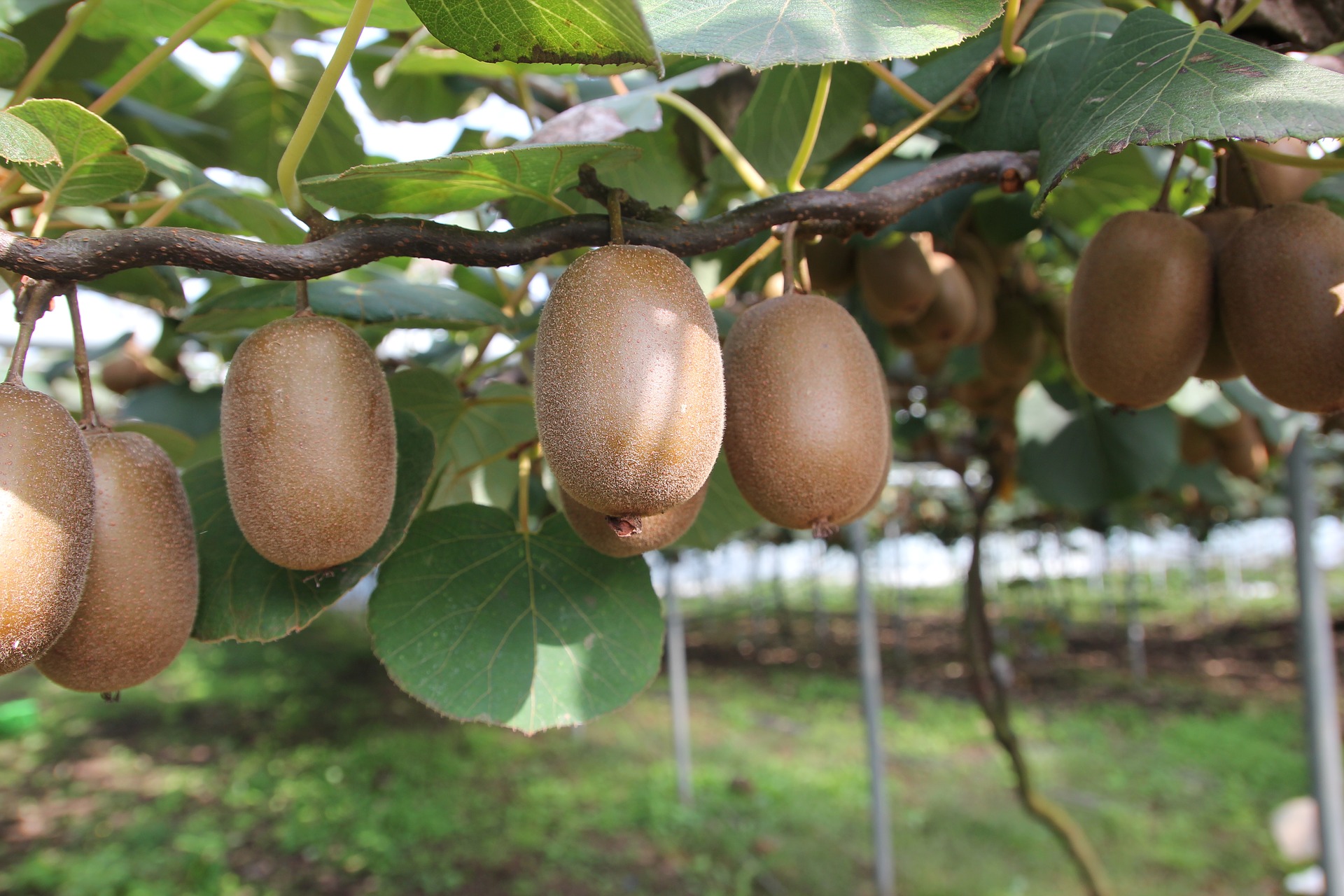
Kiwi is a citrus fruit packed with Vitamin C, Vitamin B-6, Magnesium and Calcium.
Most of the kiwi fruit sold in Britain nowadays is from Italy, but as long as you have a spacious sunny spot in your garden, you can grow it yourself too. It will just take 3-4 years until your new kiwi plant starts producing fruits.
- Unless you choose a self-fertile variety, you will need both a male and a female plant. The female kiwi plant produces the fruit and the male is required for pollination.
- Plant your male and female kiwi plant at about 3-4 meters apart next to a wall, fence or pergola (as they are climbing plants).
- Kiwis like a slightly acidic, fertile, well-drained soil.
- Protect your young kiwi plants from frost by covering them with fleece.
- Keep your plant well watered during long dry spells.
- Kiwi fruits need to be left on the vine as long as possible and harvested before the first frost. If you leave them on a sunny windowsill, they should be ripe and ready to eat a few weeks later.
Lemons

Lemon is one of the citrus fruits that contain the highest amount of vitamin C. Although it is not a hardy plant, you can still successfully grow it in the UK as long as you keep it indoors or in a greenhouse with temperatures not lower than 5-10°C.
- It’s best if you plant your lemon tree in a container, which you can move outdoors in the summer, and somewhere indoors in the winter.
- The best time to plant your lemon is in spring, to allow the tree to grow and establish itself during the warmer months.
- Keep the soil damp, but not waterlogged. In winter, allow the surface to partially dry out before watering, then water thoroughly, allowing excess moisture to drain away.
- It takes up to 1 year for a lemon fruit to ripen, so they often flower and fruit at the same time.
Mushrooms
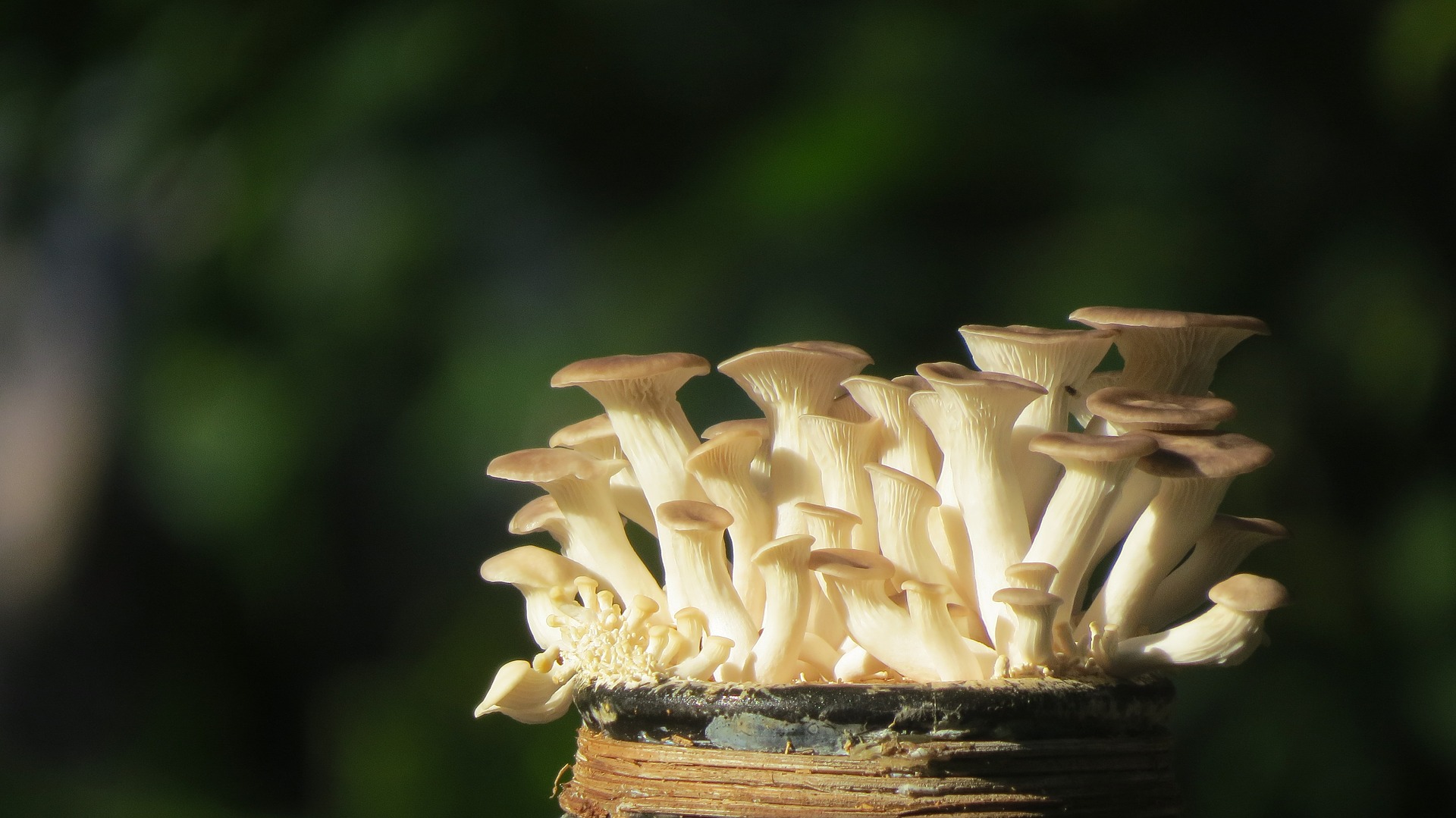
Edible mushrooms (such as button, oyster, porcini and chanterelles) contain B vitamins, as well as a powerful antioxidant called selenium.
One of the easiest ways to start your mushroom growing journey is with mushroom grow kits, which are available to purchase even in some local supermarkets.
Red bell peppers

The red bell paper contains high amounts of Vitamin C, Vitamin A, and Vitamin B-6.
Ideally, bell peppers should be grown in a greenhouse or in containers outside in a warm, sunny spot.
- Sow your bell peppers from mid-February to the end of March indoors, where the temperature needs to be 18-21°C.
- Transplant your peppers either in the greenhouse/polytunnel (at least 45cm apart), or in grow bags (at least 30cm wide) placed in a sheltered sunny spot.
- Peppers like moist soil but avoid water-logging. Soil should also be well-draining and rich in organic matter.
- If your plants grow too high (more than 35cm), pinch out the uppermost growing tips to stop them from becoming leggy.
- To produce the largest and healthiest fruit, peppers require full sun. Remove some of the foliage if it is blocking the light from the fruits.
- The longer bell peppers stay on the plant, the sweeter they become and the greater their vitamin C content. Harvest as soon as they reach the desired size or colour.
Spinach

Although there isn’t a study that proves eating spinach can make you strong like Popeye, this leafy green contains a ton of important nutrients and fibre to be a substantial part of a healthy diet. The bad news is that store-bought spinach is one of the veggies with highest amounts of pesticide residues.
Lucky for you, it is quite easy to grow spinach yourself in the UK.
- Plant your spinach seeds directly in the ground 1-2cm deep and 30cm apart in wide rows.
- Summer cultivars can be sown every few weeks from February (under fleece), or outdoors from mid-March to the end of May. Winter cultivars can be sown in August and in September.
- Spinach likes light, fertile and moisture-retentive soil.
- Keep the soil moist, and feed the plants fish emulsion every 10 days until they’re 15cm tall.
- Cut the spinach leaves from the outside of the plant, or harvest entire plants if you see buds starting to form at the centre.
- Winter cultivars will need to be covered with fleece from October onwards.
Strawberries
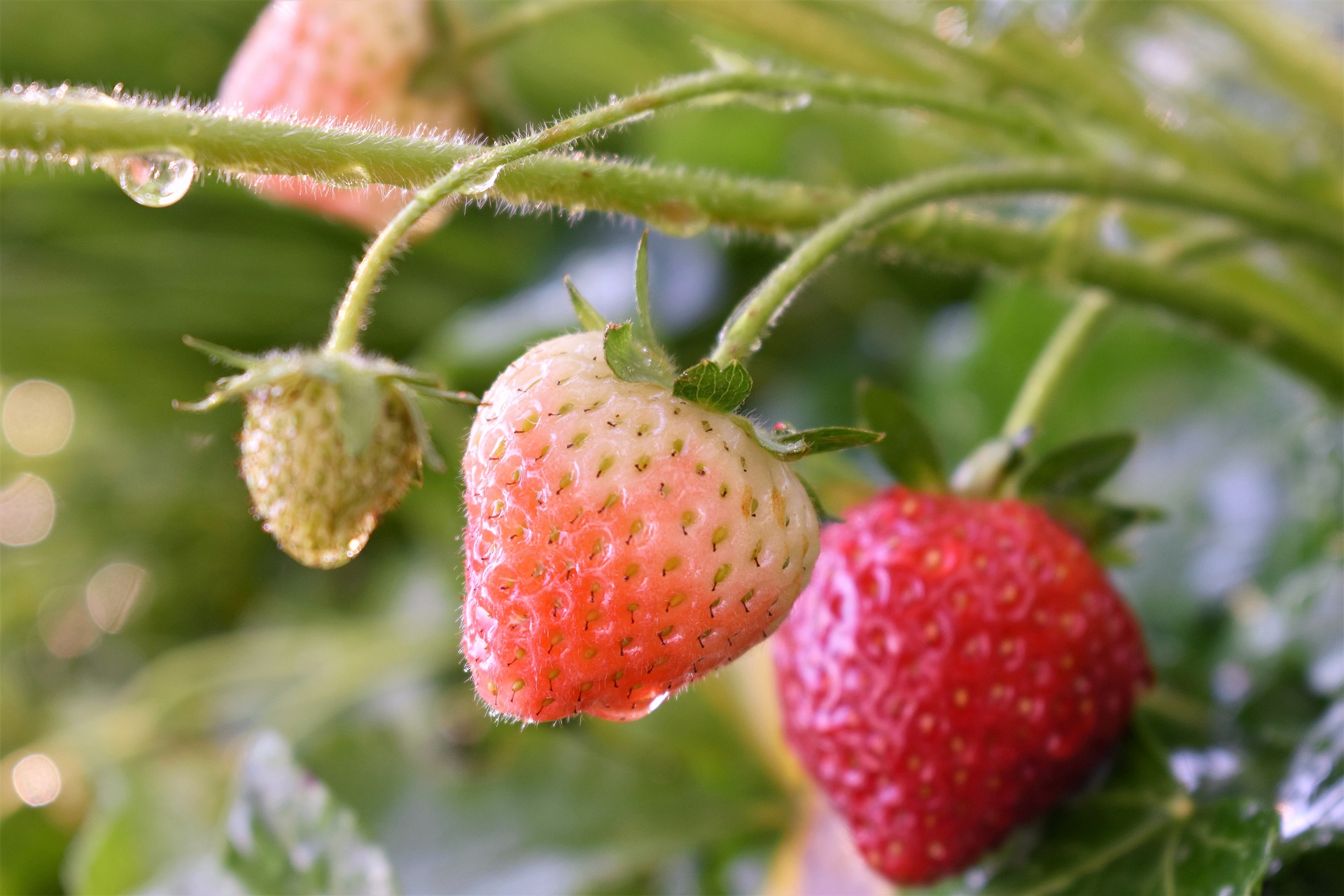
Strawberries are Britain’s favourite fruit! Not only are they delicious but they are rich in important nutrients and minerals that keep us all healthy. Unfortunately, they are also the most toxic fruit sold in supermarkets based on pesticide content.
Here are some basic tips on how to grow your own organic, delicious strawberries in the UK:
- Pick a sunny, sheltered spot and fertile, well-drained soil for your strawberries. But don’t plant them in spots where you have previously grown potatoes, chrysanthemums, or tomatoes to avoid verticillium wilt.
- You can plant your strawberries directly in the soil, in raised beds or containers.
- Buy runners from late summer to early spring, and plant them in early autumn, or early spring.
- Water your new strawberries frequently until they establish.
- In the growing period water them well during dry spells. Do not wet the crowns and fruits, to avoid disease.
- Pull out weeds or mulch to suppress them. Cover your strawberries with netting to prevent birds stealing your fruit.
- Harvest your strawberries when they are all bright red, ideally during the warmest part of the day when they are most tasty.
- Try to rotate your strawberry beds every 3 years and replace with new plants.
Sunflower
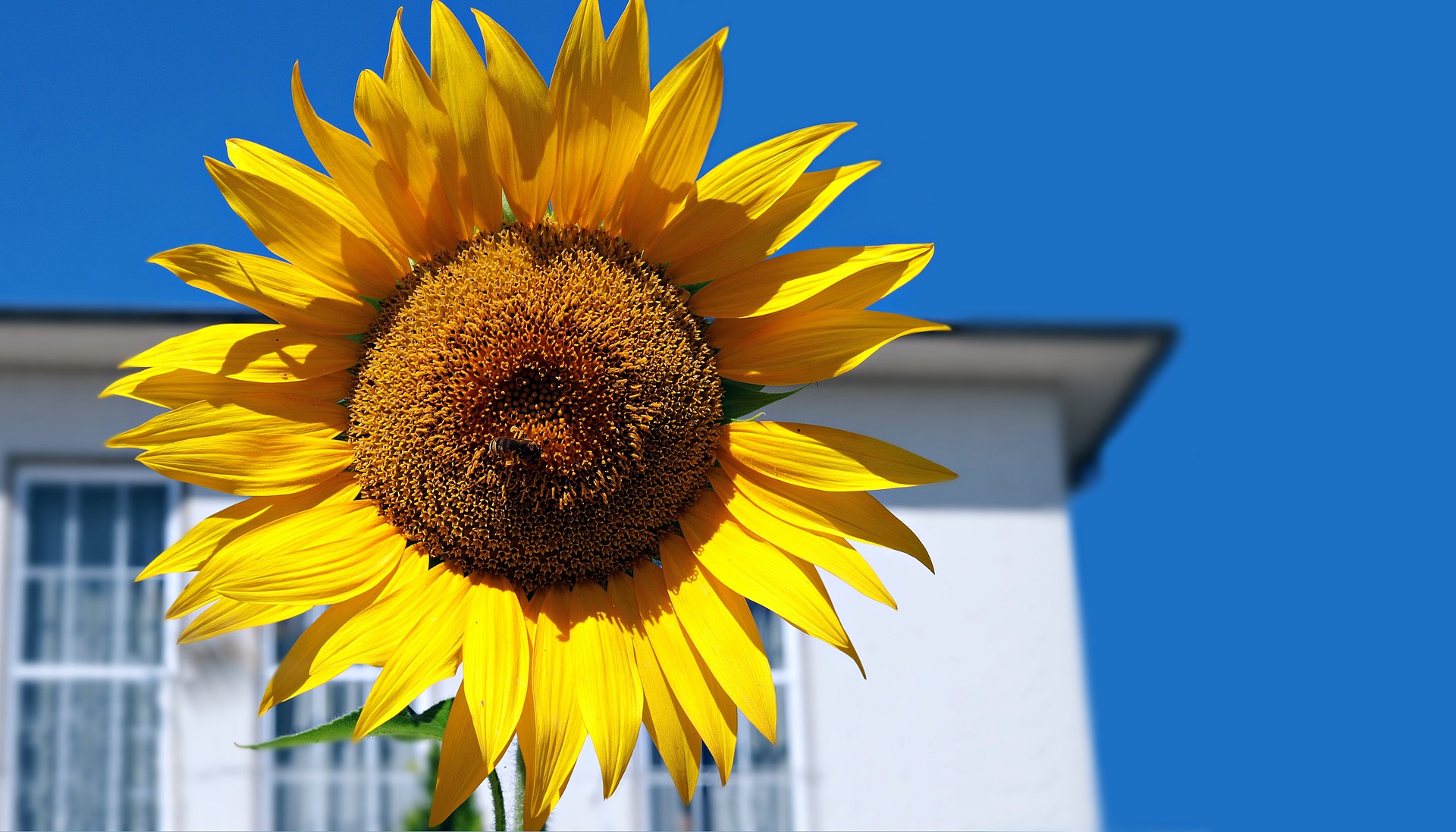
The sunflower plant is not only beautiful but also its seeds are a rich source of Magnesium, Vitamin B-6, Iron and Vitamin E.
Most sunflowers are tough, heat- and drought-tolerant and easy to grow as long as the soil is not waterlogged. Some varieties can grow to over 5 meters in height, others are developed for small spaces and containers.
- Your sunflowers will require a lot of sunlight, so choose a sunny, sheltered spot for them.
- They prefer well-dug, loose, slightly acidic, nutrient-rich, well-draining soil.
- You can plant your sunflower seeds directly in the ground in Spring when the soil temperature has reached 13–16°C.
- Water young plants around the root, and once established water deeply once a week to encourage deep rooting.
- Your seeds are ready to be harvested once the flower dries on or off the stem (the back of the head turns brown).
Sweet Potato
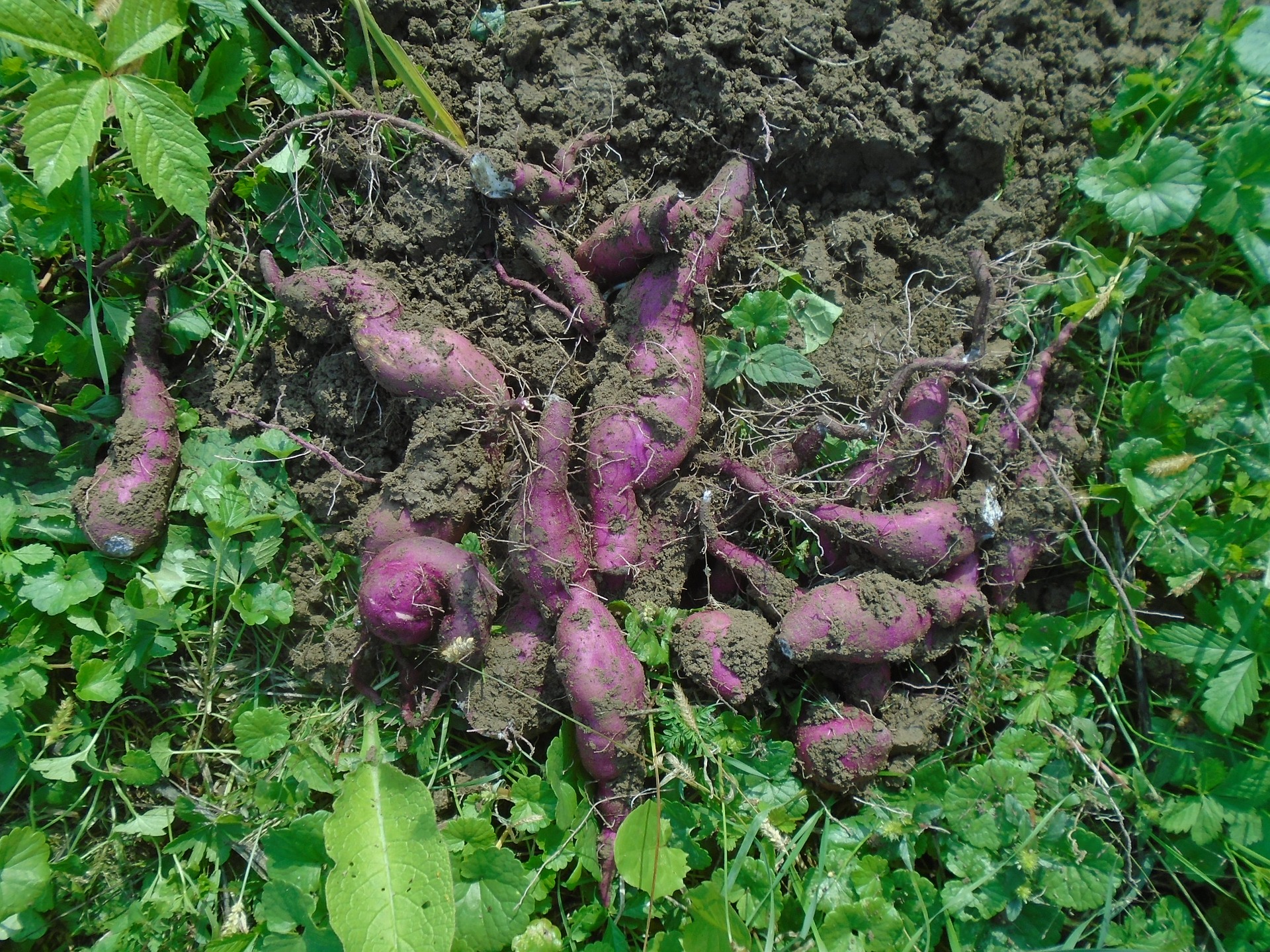
Sweet potatoes are an amazing source of beta-carotene that turns into Vitamin A in your body. It not only keeps your skin and vision healthy, but helps your body’s natural defence against illness and infection.
They are traditionally grown in warmer climates, but hardier cultivars can be grown successfully in Britain’s cooler climate.
- To grow your own sweet potatoes you will need ‘slips’ – the long shoots that have been removed from ‘chitted’ sweet potato tubers.
- Plant each slip individually in small pots of multi-purpose compost. Until your slips have established, keep them in a warm, frost-free area.
- Sweet potatoes require high temperatures of 21-26C, so it is best to grow them in greenhouse borders or polytunnels. Keep plants 30cm apart in the ground or in fabric bags.
- They like full sun and fertile, well-drained, neutral soil.
- Water your sweet potato plants regularly and apply a feed of general-purpose fertiliser every two or three weeks.
- When the foliage and stems begin to turn yellow and die back, it’s time to harvest your sweet potatoes.
Watermelon
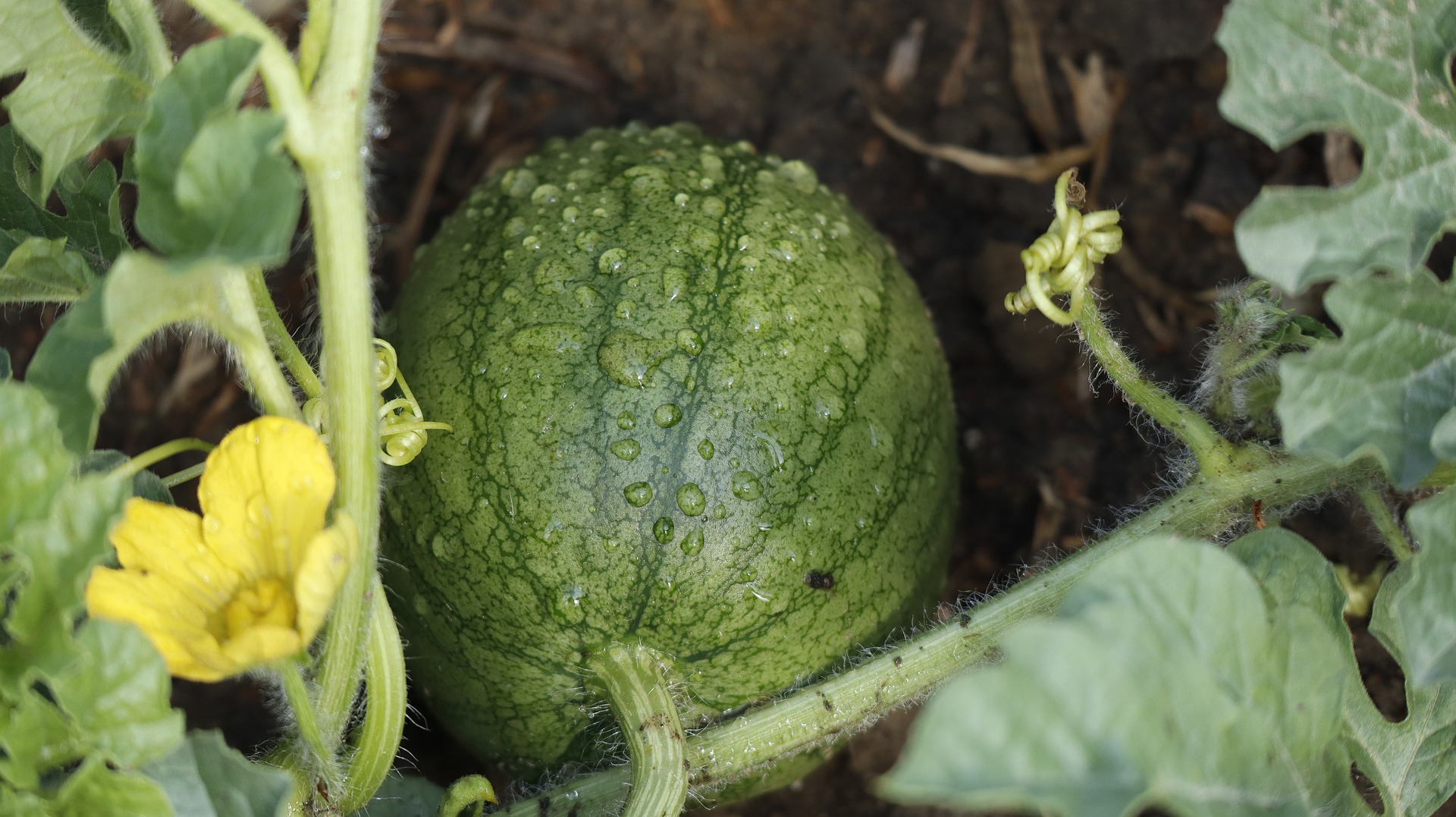
Watermelon is delicious, refreshing, and an awesome source of Vitamin A, Vitamin C, Vitamin B-6 and glutathione.
Watermelons need warm and sunny conditions in order to grow well, but some varieties perform ok in cooler climates.
- To ensure success, it might be best to plant your watermelon seed in grow bags and containers in your greenhouse.
- The seeds need to be sown 6 cm deep and about 90cm apart.
- They need lots of sunshine and well-drained soil with a pH of 5.5 to 7.
- Water well and allow them to drain properly between waterings.
- Towards the end of the summer, your watermelons will be ready to harvest.
As we stated in the introduction of this guide, our immune system is very complex. And one of the most important things you can do to support your immune health is to have a healthy diet, which includes a good variety of fruits and veggies.
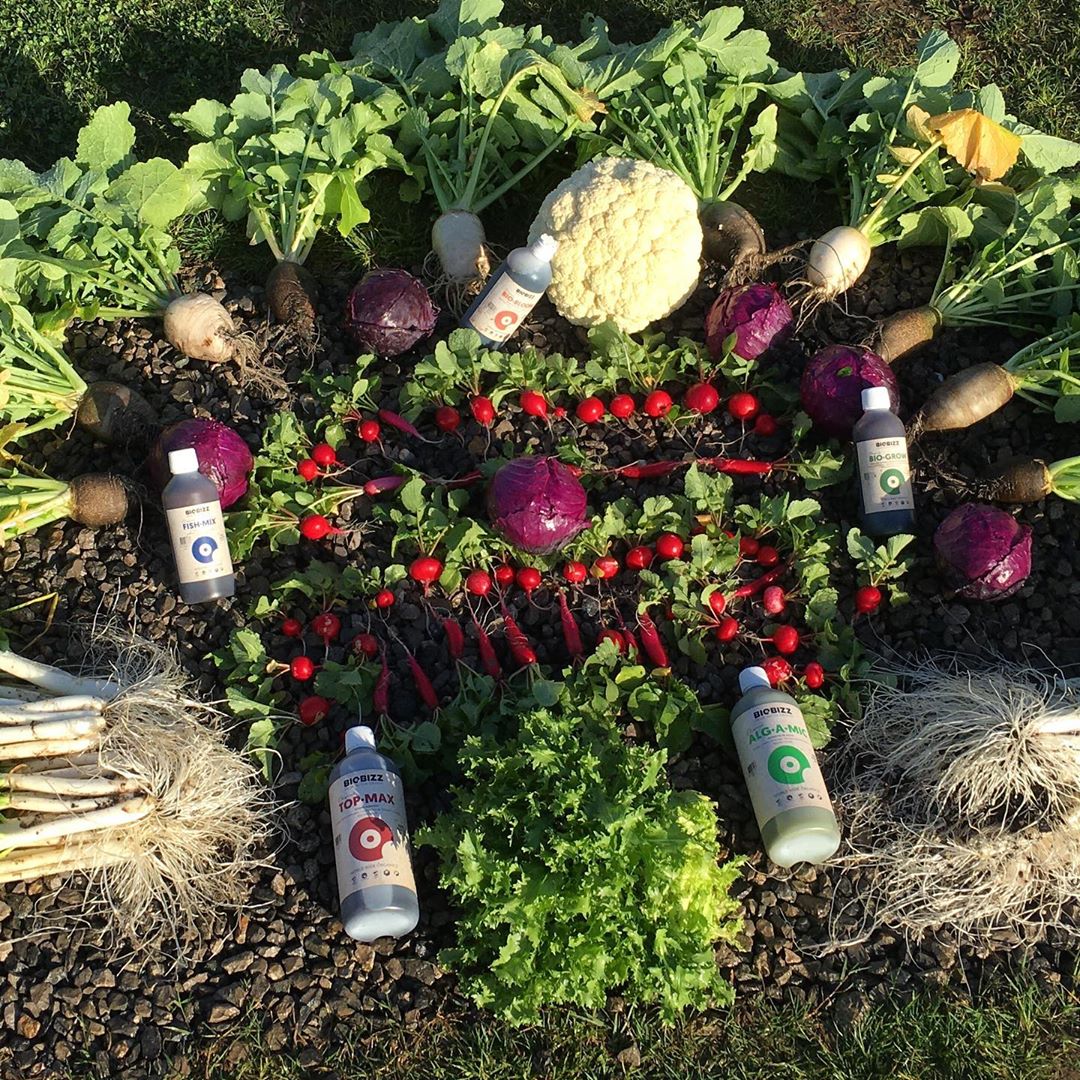
All the fruits and veggies on this page, are a great source of the vitamins and minerals our bodies need to be happy and healthy. And similar to how our bodies need vitamins and nutrients to survive, so do your plants. Head over to our shopping section to buy the nutrients and fertilisers your plants need to thrive and survive. If you are an organic gardener, make sure to check out our detailed guide on Biobizz nutrients and soils – you can’t go wrong when you go organic.
Let us know in the comment section below, what are your favourite fruits and veggies to grow and don’t forget to follow our Facebook page for more useful gardening guides every month.

